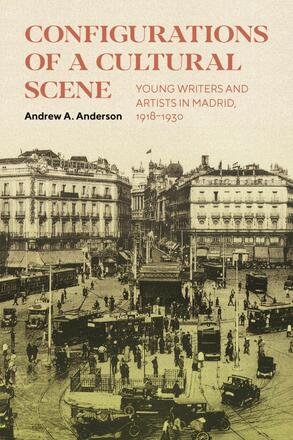
Configurations of a Cultural Scene
Young Writers and Artists in Madrid, 1918-1930
The friendships and collaborations of young writers and artists in 1920s Madrid.
Description
Throughout the 1920s, a remarkable number of young writers and artists lived and worked in Madrid, creating an atmosphere of effervescence and an upsurge in creativity that has rarely been equalled. These young people, acquainting themselves with one another within the span of only a few years, came together to form a tightly woven network of both personal and artistic relationships.
In Configurations of a Cultural Scene Andrew Anderson explores this growing community of artists and writers with a focus on how sites of face-to-face interaction in Madrid fostered creative work and forged young identities. Organizing locations into places of sociability, learning, and residence, Anderson offers five case studies that exemplify the significance of these three points of intersection: Rafael Barradas and his tertulia at the Café de Oriente; an artists’ studio located on the Pasaje de la Alhambra; women art students at the Academia de San Fernando who lodged at the Residencia de Señoritas; the artist and writer Gabriel García Maroto; and the close relationship between artist Maruja Mallo and poet Rafael Alberti.
Departing from conventional approaches that foreground the trajectories of individual careers, Anderson privileges the lived experience of artists and writers in his analysis of a rich cultural scene held together by cooperation, exchange, and interpersonal connections.
Reviews
“Configurations of a Cultural Scene is a major step forward in illuminating the vibrant and often radical cultural activities of the 1920s. Moreover, it demonstrates the crucial importance of collective engagement in fomenting artistic innovation.” Juli Highfill, University of Michigan and author of Modernism and Its Merchandise: The Spanish Avant-Garde and Material Culture, 1920–1930